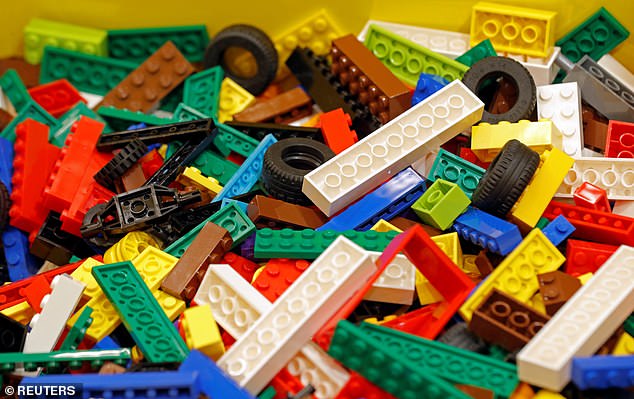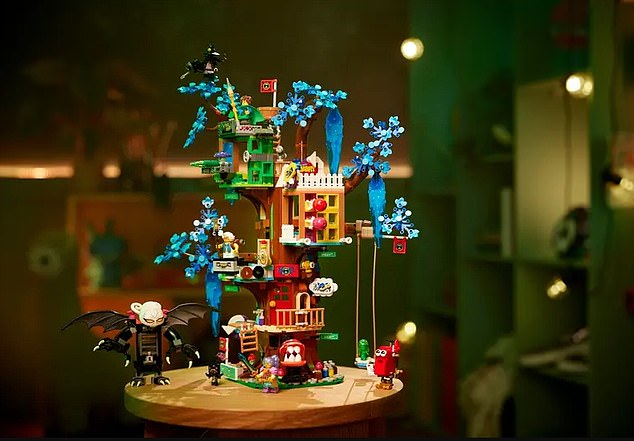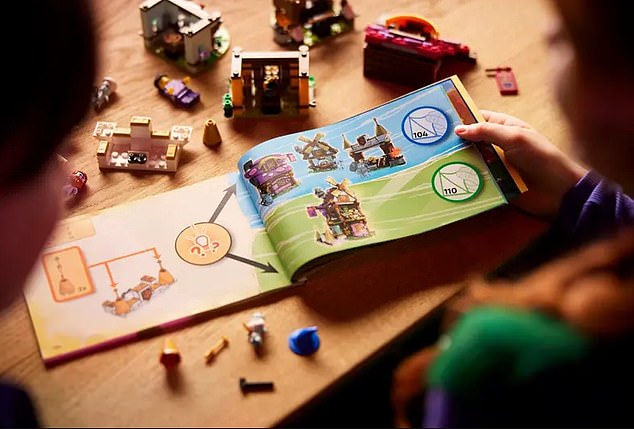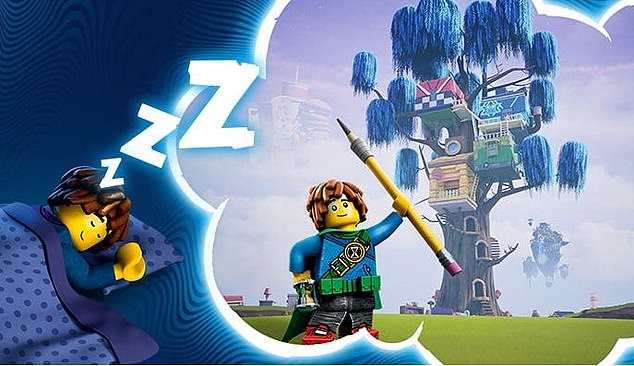Inside Lego’s exhaustive quest to develop the next hit set that took four years and insight from 30,000 kids – as the world’s biggest toymaker faces a huge test this holiday season
Lego executives, who spent four years developing the latest set with the input of 30,000 children, are eagerly waiting to see whether the product will sell.
The toymaker faces its biggest challenge yet this holiday season, after investing countless hours into producing the Dreamzzz line.
The Danish company’s latest offering consists of 11 sets released this summer.
The toys feature surreal figures based on dreams and nightmares, including a shark ship, a fantastic tree house and a space bus.
Sales of the latest product have the power to determine whether the line continues to expand or becomes another victim of the digital age.
Lego has spent four years developing its latest product line Lego Dreamzzz to ensure the toys are commercially successful

Market research for the line found that 30,000 children gave their opinions on the toys, which consist of surreal characters based on dreams and nightmares
Developers started with fifty ideas, which were then narrowed down to just three. They were presented to children through giant posters displayed in galleries Wall Street Journal reports.
Concepts that developers had spent months working on were often brutally dumped after negative feedback from children.
“We took the things that we thought were valuable, and then we started pitching them to kids, and we got them to tell us the things that got them excited and wanted to talk about,” said Keith Malone, head of entertainment at Lego .
“It became clear pretty quickly that this whole idea of dreams, and what they were telling each other about their dreams, was super powerful, which made us think this could be our next big IP (intellectual property).”
The team then spoke with dream psychologists and even more kids to hone the concept into the one launched earlier this year, with sets ranging from $20 to $140.
Lego has managed to become the most successful toy company in the world by manufacturing versions of the same product.
The brand was launched in the 1930s by master carpenter Ole Kirk Christiansen, transitioned to plastic in the 1950s and has since expanded to its current version.
It has seen tremendous success in recent years through collaborations with recognizable entertainment franchises such as Star Wars and Harry Potter.

Lego started the process with around fifty ideas, which were eventually narrowed down to three, identifying the idea of dreams as a strong attraction to children.

The Dreamzzz line was launched in the summer of this year and consists of 11 products priced between $20 and $140
But the company’s survival depends on producing products where it can keep all the revenue.
Current CEO Niels Christiansen came on board in 2017 as the company struggled to compete with smartphones and video games that were also vying for children’s attention.
He noted a lack of originality in the products and eliminated 1,400 non-creative positions, equivalent to about 15% of the company’s workforce.
He then used the resources to nearly double the product team to 2,100 people and expanded the Lego portfolio, increasing the number of products from 600 to 750 toys.
Lines are updated regularly and if they are not performing well they can be quickly culled.
The strategy has paid off so far, with sales doubling since he took over. Last year, Lego posted sales of $9.2 billion, almost as much as rivals Hasbro and Matel combined.
It wasn’t without its flops, though, including a 2019 set called Hidden Side, based on ghosts, and 2021’s Vidiyo trying to combine the minifigures with a video app.
So far the reactions to Dreamzzz have been positive. The company launched an animated TV series that essentially serves as a feature-length advertisement for its products that have already captured the attention of children.

The line has received positive critical response, but it remains to be seen whether it will perform well commercially this holiday season
The show features a group of high school kids living in Brooklyn, New York, as they face off against creatures from their dreams and nightmares, which the creators hope other kids will identify with.
The instructions for building the sets are stylized to look like a comic book, which has also earned critical acclaim.
But despite positive reviews from the likes of Matt Yeo, a British reviewer for independent Lego fan website Brick Fanatics, the real test will come during the holidays.
“I’m sure most kids who tested Dreamzzz said they liked it,” David Robertson, the author of Brick By Brick, told the Wall Street Journal. But ‘what’s more fickle than a seven-year-old?’
If sales don’t meet expectations, Christiansen says the company won’t hesitate to draw the line, citing it as a reason for its success in recent years.
He said Dreamzzz’s early sales were encouraging, although he declined to reveal exact details.
